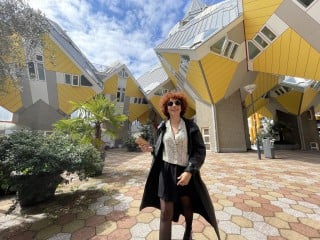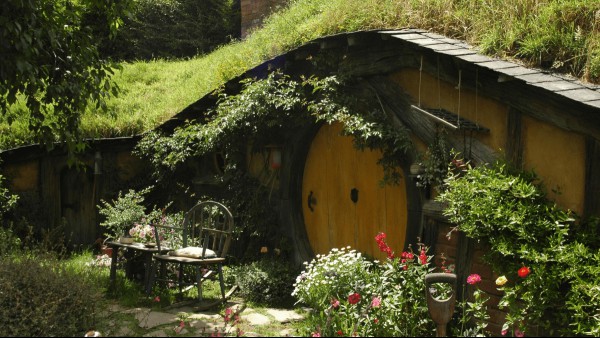A Pronunciation Guide To The Dutch Alphabet
The alphabet is one of the first things we learn as children. It’s strange, then, that people sometimes try to skip it when learning a new language. If you’re learning Dutch, you’ll recognize all the letters because it, too, uses the Latin alphabet. Yet when you look at Dutch words, you’re going to see letters used in ways you’re not used to. Rather than struggle through this process, return to the building blocks by studying the Dutch alphabet.
As a quick intro, here’s our guide to the Dutch alphabet. We’ll start by looking at the letters alone, and then cover some of the trickiest pronunciations. Once you’ve got this down, pronouncing words in Dutch should be a breeze.
The Dutch Alphabet
As mentioned, the Dutch alphabet uses the letters from the Latin alphabet, and it has the same 26 letters as English does. While it may seem like overkill, we’ll list them here. And if you prefer to learn the alphabet with a song, here’s one that uses the same tune as the English alphabet song.
A B C D E F G H I J K L M N O P Q R S T U V W X Y Z
Keeping things simple, Dutch only uses two accent marks, and both of them are not very common. It uses the acute accent (Á, É and so on) to mark stress, and it uses the diaeresis (Ö, Ü and so on) to show when two vowels need to be pronounced separately.
Dutch Vowels
The vowels in Dutch are more than half the battle. There are two main pronunciations of every vowel — short and long — which is dictated by where they appear in a word. Fortunately, there are rules that aren’t too hard to learn.
A
- If the letter A appears before two consonants, or it appears in a syllable that ends with a consonant, it is pronounced short, like the “o” in “dot.”
- het land — the country
- de stad — the city
- If the letter A appears at the end of a syllable, or is doubled (AA), then it’s long, like the “a” in “Chicago.”
- oma — grandma
- klaar — finished
- The letter combo AU is pronounced like the “ou” in “house.”
- de pauze — the pause
- blauw — blue
E
- If the letter E appears before two consonants, or it appears in a syllable that ends with a consonant, it is pronounced short, like the “e” in “met.”
- lekker — tasty, nice
- west — west
- If the letter E appears at the end of a syllable, or is doubled (EE), then it’s long, like the “a” in “male.” It’s also the only vowel that can be doubled at the end of a word to indicate a long pronunciation.
- de regen — the rain
- veel — a lot
- de slee — the sled
- When you see the letter combination EU, it’s pronounced like the “u” in “hurt.”
- Europa — Europe
- treurig — sad
- The letter combination EI doesn’t have an equivalent in English. It sounds like a cross between the “a” in “maze” and the “i” in “line.”
- het meisje — the girl
- het eiland — the island
I
- If the letter I appears before two consonants, or it appears in a syllable that ends with a consonant, it is pronounced short, like the “i” in “sitcom.”
- ik — I
- winnen — to win
- If the letter I appears at the end of a syllable, or is combined with E to make IE, then it’s long, like the “ee” in “keep.”
- de gitaar — the guitar
- de taxi — the taxi
- drie — three
- The letter combo IJ sounds similar to the EI mentioned in the last section: a cross between the “a” in “maze” and “i” in “line.”
- Berlijn — Berlin
- jij — you (informal)
O
- If the letter O appears before two consonants, or it appears in a syllable that ends with a consonant, it is pronounced short, like the “o” in “hot.”
- de vork — the fork
- op — on
- If the letter O appears at the end of a syllable, or is doubled (OO), then it’s long, like the “oa” in “boat.”
- de olie — the oil
- de doos — the box
- The letter combo OE is pronounced like the “oo” in “boost.”
- goed — good
- moe — tired
- OU is pronounced like AU, resembling the “ou” in “house.”
- jou — you (informal)
- het zout — the salt
U
- If the letter U appears before two consonants, or it appears in a syllable that ends with a consonant, it is pronounced short, somewhat like the “u” in “burden.”
- de zus — the sister
- tussen — between
- If the letter U appears at the end of a syllable, or is doubled (UU), then it’s long, somewhat like the “ew” in “few.”
- de muziek — the music
- het uur — the hour
- The letter combo UI has no equivalent in English, but is somewhat like the “er” in “herd.”
- ui — onion
- het buitenland — abroad
Dutch Consonants
While many of the Dutch consonants will be pretty straightforward, there are a few that are a little tricky. Here are some of the most important ones to master.
CH and SCH
- The letter combo CH has no equivalent in English. The closest approximation is the guttural “ch” in the Scottish word “loch.”
- rechtdoor — straight ahead
- achter — behind
- When SCH appears at the end of a word, it sounds like the “ss” in “pass.” When it appears at the start of a word or in the middle of one, it combines the “s” in “sit” and the guttural “ch” sound discussed above.
- fantastisch — fantastic
- de schouder — the shoulder
- misschien — perhaps
D, T and TH
- The letter D is pronounced like the English “d” in “dog” most of the time, but when it appears at the end of a word it sounds more like the “t” in “hat.”
- het ding — the thing
- de vader — the father
- goed — good
- Both T and TH are pronounced like the “t” in “table,” no matter where they appear in a word.
- beter — better
- de thee — the tea
EN
- The pronunciation of EN at the end of a word differs depending on the speaker’s dialect. In many parts of the Netherlands, it’s pronounced kind of like “uh” with the N essentially silent.
- lopen — to walk
- werken — to work
- In the east and the north of the Netherlands, the N is pronounced.
- tegenwerken — to oppose
- paarden — horses
G
- The letter G is another one with no English equivalent. It’s a guttural sound, and it’s pronounced the same way no matter where it appears in a sentence.
- dag — hello
- gaan — to go
- morgenavond — tomorrow evening





